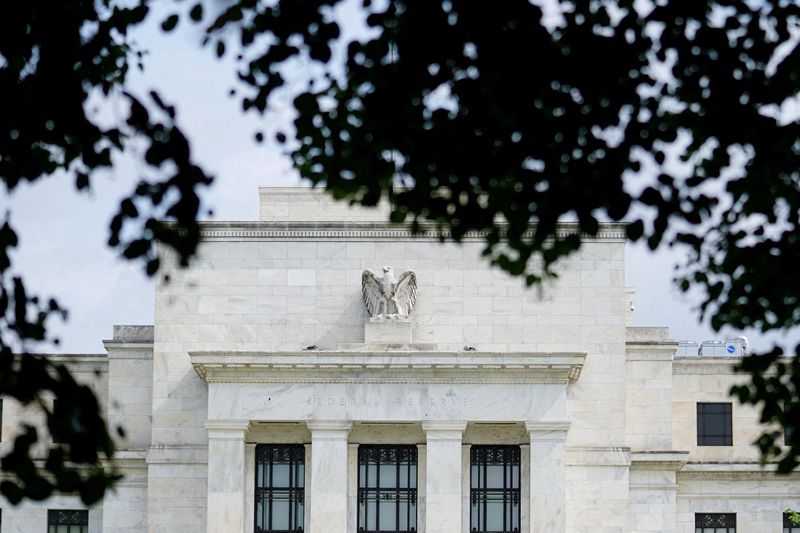Big central banks are firmly in rate-cut mode
2024.10.17 09:59
By Naomi Rovnick and Alun John
LONDON (Reuters) – Seven of the 10 big developed-market central banks tracked by Reuters have now started easing policy, with expectations of how quickly each will move swinging back and forth as policymakers stress data dependency.
Here’s where major rate-setters stand and what traders expect next.
1/ SWITZERLAND
Demand for Switzerland’s haven currency gave its central bank less of an inflation problem than other rate setters when commodity costs soared after Russia’s 2022 Ukraine invasion.
The Swiss National Bank now faces prices falling too far.
Swiss inflation has softened to 0.8% year-on-year, enabling the SNB to follow up a rate cut to 1% in September with more easing that could boost exporters suffering from the franc’s persistent strength against the euro.
Money markets price strong odds of Swiss rates dropping to 0.5% by March 2025.
2/ CANADA
Rates markets show traders fully expect the Bank of Canada to lower rates for its fourth consecutive meeting on Oct. 23 and see even chances of a jumbo 50 basis point cut to 3.75%.
Canadian inflation has eased to 2%, the economy is sluggish, pessimistic businesses reckon still-high rates are curbing demand, and the BoC has reported concerns about rising consumer credit distress levels.
3/ SWEDEN
Sweden’s Riksbank, which started cutting rates in May after its hikes crushed inflation but hastened an economic downturn, is now trying to jump-start growth.
It cut rates to 3.25% in September and guided markets to fully price further back-to-back cuts in November, December and January.
4/ NEW ZEALAND
Inflation in New Zealand dropped to 2.2% in the second quarter, the first time it has been within the Reserve Bank of New Zealand’s 1-3% target range since March 2021.
That leaves the RBNZ with room to continue its aggressive easing, after its 50 bps cut in October. Traders price another such move in November, and likely February too.
5/ EURO ZONE
The ECB cut rates for the third time this year on Thursday in a tacit acknowledgement that inflation could settle around its 2% target more quickly than previously thought.
Markets expect further 25 bp moves at each of its next three meetings, and for the ECB to take its benchmark rate from a level where it restricts growth to at least a neutral setting by the second half of 2025.
6/ UNITED STATES
The Federal Reserve last month kicked off an easing cycle with a big 50 bps rate cut, the first reduction in more than four years. Traders now expect it to hold off from further aggressive measures as the U.S. economy remains resilient.
Markets are pricing in roughly 50 bps worth of further easing by year-end, down from about 70 bps weeks ago, after Fed officials suggested that a first big cut had made a recession less likely and said the labour market was running at average levels.
7/ BRITAIN
The Bank of England cut rates from 5.25% to 5% in August, and markets have ramped up bets for further easing after data on Wednesday showed inflation has dropped significantly below target.
Consumer prices rose by 1.7% overall in September year-on-year and fell to 4.9% in Britain’s dominant services sector, undershooting BoE forecasts and driving money markets to price almost a nine in ten chance of two more rate cuts this year.
8/ NORWAY
Norway’s central bank remains in the hawkish camp.
It left its policy rate unchanged at 4.50% last month and said any cuts must wait until the first quarter of 2025, boosting the crown currency.
Even though core inflation eased unexpectedly in September, headline is sticky. Markets price just a one in three chance of a cut by year-end, meaning Norway’s easing cycle will likely start well after those of its peers.
9/ AUSTRALIA
Also hawkish is Australia.
The Reserve Bank of Australia has held rates at 4.35% since last November and has not ruled out further hikes to bring inflation back sustainably within its 2-3% target band.
Inflation may have slowed to a three-year low of 2.7% in August, but Thursday’s strong labour market data has left traders pricing just a 30% chance of a quarter-point cut by year end.
10/ JAPAN
Rising inflation prompted longtime outlier the Bank of Japan to nudge borrowing costs up to 0.25% in July, a move that wreaked havoc on global trades that were underpinned by its ultra-loose monetary policies.

After that drama, a slim majority of economists polled by Reuters expect the BOJ to leave rates steady for the rest of this year. That is perhaps not surprising as new Prime Minister Shigeru Ishiba, once seen as a monetary hawk, says the economy was not ready for further hikes.
Oct. 27’s election is another reason for the BOJ to stand pat at its late October meeting.








